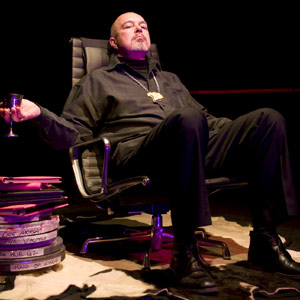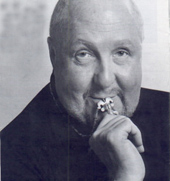The Growing Tide of Atheism in Austraila
June 17, 2011
If you want to get together in any exclusive situation and have people love you, fine – but to hang all this desperate sociology on the idea of The Cloud-Guy who has The Big Book, who knows if you’ve been bad or good – and CARES about any of it – to hang it all on that, folks, is the chimpanzee part of the brain working.
Frank Zappa
 It seems there is a growing movement towards atheism in Australia. But it only ‘seems’ because it is difficult to quantify something which has a central thesis of simply not believing in something. It would be a lot easier to quantify people who believe in fairies. “Tick this box if you believe in fairies (1% tick box). Everybody else, tick this box”. And that’s what atheism appears to be: everybody else who hasn’t ticked one of the ‘belief’ boxes. The leftovers. Those who “have no faith”, follow no doctrine nor cultivate myth. Atheist are the ‘everybody else’, whose agenda is – by virtue of definition – not promoted because it has nothing to promote. Or does it?
It seems there is a growing movement towards atheism in Australia. But it only ‘seems’ because it is difficult to quantify something which has a central thesis of simply not believing in something. It would be a lot easier to quantify people who believe in fairies. “Tick this box if you believe in fairies (1% tick box). Everybody else, tick this box”. And that’s what atheism appears to be: everybody else who hasn’t ticked one of the ‘belief’ boxes. The leftovers. Those who “have no faith”, follow no doctrine nor cultivate myth. Atheist are the ‘everybody else’, whose agenda is – by virtue of definition – not promoted because it has nothing to promote. Or does it?
Atheistic belief (a conundrum of paradox and quirk of language) has in recent years become a vociferous and in some cases belligerent voice against the perils of organised religion. Screen grabs of Christopher Hitchens belittling an evangelist on Fox News or scorning a rabbi in a public debate have entered America’s consciousness with little apology.
In Australia, the 2006 census showed the “No Religion” box ticked 19% of the time. The 1996 census showed 17%. In 1986 it was 13%, and in ’76 just 8%. Go back before the 50’s and it becomes less than one percent. This certainly does quantify a ‘growing movement’.
The contentious issue with categorical definitions however are plain to see if you consider the weight behind someone’s answer. One must ask, of the 64% (2006) who identify with Christianity (mostly Anglican or Catholic), how many of those are apathetic to the doctrine? For example, many kids who were baptised, went through religious schooling, did their Holy Communion and “confirmation” (all before 12 years of age), would therefore identify as a Christian in something like a census question, yet may hold no serious spiritual resonance or profess any active application to the teachings. Only a staunch ideologist would refuse to be married by a priest, for example. Yet those who ticked the Christian box accept it as ‘the norm’, despite the triviality of their religious belief. Likewise, those who ticked “No Religion” are not necessarily atheist, but may simply hold a non-aligned spiritual conviction.
 Christopher Hitchens goes a step beyond the definition of atheism and identifies as an anti-theist. While this may seem an evolution of the term, it highlights why many people perhaps abstain from the categorisation: it seems negative, aggressive, impudent, and dare I say, sacrilegious. In 2006, an American study from the University of Minnesota found atheists are associated with undesirable attributes such as criminal behaviour, drug use, amoral materialism, and cultural elitism. Sociologist Penny Edgell, the study’s lead researcher, states “Our findings seem to rest on a view of atheists as self-interested individuals who are not concerned with the common good.” Atheists are also the minority group most Americans are least willing to allow their children to marry.
Christopher Hitchens goes a step beyond the definition of atheism and identifies as an anti-theist. While this may seem an evolution of the term, it highlights why many people perhaps abstain from the categorisation: it seems negative, aggressive, impudent, and dare I say, sacrilegious. In 2006, an American study from the University of Minnesota found atheists are associated with undesirable attributes such as criminal behaviour, drug use, amoral materialism, and cultural elitism. Sociologist Penny Edgell, the study’s lead researcher, states “Our findings seem to rest on a view of atheists as self-interested individuals who are not concerned with the common good.” Atheists are also the minority group most Americans are least willing to allow their children to marry.
This view of atheism is precisely why there was a push to promote the word “Brights” as an alternative, in the same way homosexuality adapted “gay” into the modern lexicon. Although Hitchens and others rightly asserted this move to be cringe-worthy and conceited, the intention to rebrand atheism underscores the problem of categorising non-belief under a banner title. When the 2010 Global Atheist Convention was held in Melbourne earlier this year, critics attacked it as a church in itself, with Richard Dawkins as its pope.
In 2006 in the UK, the National Federation of Atheist, Humanist and Secular Student Societies began advertising on buses in what was one of the first instances in Western society where atheists proactively promoted their belief. Supported (and partly funded by) Dawkins, the message was simply that it is OK not to believe in God. But politics, it seems, is never too far away from any debate.
The separation of church and state is a keystone of secular political philosophy. Dr Trent Reardon from The Secular Party of Australia states that his party believes “in both freedom of and freedom from religion. This means that any individual can believe and practice any religion or none, provided that they do no harm to others or seek to impose their beliefs or practices on others without consent”. It’s a view shared by Jason Ball, former president of the University of Melbourne Secular Society, who says that “any political movement which mobilises atheists has to be about secularism, not ‘making everyone an atheist’”.
 Humanism imparts its difference to atheism with ever more vigour. Stephen Stuart, president of the Humanist Society of Victoria, says humanism “is not driven by a lot of adrenalin like some of the atheists we know”, but rather “is a world-view; a life-stance – not a ‘lifestyle’”. He says it looks to “positive psychology, and is not motivated by some radical, atheistic ideology.”
Humanism imparts its difference to atheism with ever more vigour. Stephen Stuart, president of the Humanist Society of Victoria, says humanism “is not driven by a lot of adrenalin like some of the atheists we know”, but rather “is a world-view; a life-stance – not a ‘lifestyle’”. He says it looks to “positive psychology, and is not motivated by some radical, atheistic ideology.”
These organisations do however actively campaign to reform religious instruction in government schools, as well ending the National School Chaplaincy Program, which costs $50 million dollars a year. David Nicolls, president of the Atheist Foundation of Australia, also takes issue with religious indoctrination in state and private schools, stating that it’s sanctioning by secular governments “is tantamount to supporting mental child abuse” – a seemingly bellicose claim, but one which nonetheless has the backing of the Australian Psychological Society.
Quality atheist literature in recent years is partly responsible for the growing momentum of atheism. Hitchens’ God is Not Great and particularly Dawkins’ The God Delusion have become blockbusters, and are probably the most high profile dissertations of the anti-religion movement. It’s been said that they are the atheist’s bible, but that is as daft as claiming Dawkins the pope of the atheist “church”. The point is that an anti-religion best-seller was an inconceivable prospect going back just a couple of decades. Go back two centuries to 1811, when Percy B. Shelley wrote The Necessity of Atheism, and you might – with some luck – just get expelled from university (as Shelley did from Oxford). At worst you’d be locked up as a heretic or put to the stake. In 2011 at least, the growing tide of atheism is one that Moses himself could not part.






















